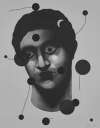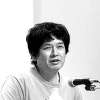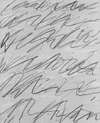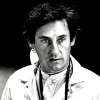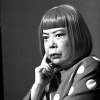Joseph
Beuys
Joseph Beuys transformed the landscape of post-war German art with his multifaceted practice and concept of 'social sculpture'. If you're looking for Joseph Beuys original prints and editions for sale or would like to sell, request a complimentary valuation and browse our network's most in-demand works.
Joseph Beuys art for sale
Discover Joseph Beuys prints for sale, exclusively available through our private network of collectors. Explore signed and unsigned screenprints, lithographs, digital prints, and rare editioned proof prints by era-defining blue chip artists.
Sell Your Art
with Us
with Us
Join Our Network of Collectors. Buy, Sell and Track Demand
Biography
Joseph Beuys was born on 12 May 1921 in Krefeld, Germany. Raised in the nearby town of Kleve, Beuys developed an early interest in natural sciences and folklore, themes that would later permeate his artistic practice. During World War II, Beuys served as a radio operator and bomber pilot in the Luftwaffe, an experience that shaped his worldview and artistic philosophy.
After the war, Beuys studied sculpture at the Düsseldorf Academy of Fine Arts. It was during this period that he began to develop his artistic language, incorporating unconventional materials such as felt, fat, and honey into his works. These materials, often linked to his wartime experiences, became central to his symbolic repertoire.
Beuys's artistic career began to flourish in the 1960s when he became associated with the Fluxus movement, an international network of artists known for their experimental and interdisciplinary approach to art-making.
In 1961, Beuys was appointed professor of monumental sculpture at the Düsseldorf Academy of Fine Arts, a position he held until 1972. During this time, he gained international recognition for his provocative performances and installations. One of his most famous works, How To Explain Pictures To A Dead Hare (1965) was a performance piece which saw Beuys, with his head covered in honey and gold leaf, cradling a dead hare and whispering to it about his drawings.
Beuys's concept of 'social sculpture' emerged in the 1970s, proposing that art could be a vehicle for social and political change. This idea was exemplified in his work 7000 Oaks (1982), a large-scale environmental project initiated at documenta 7 in Kassel, Germany, where 7,000 oak trees were planted alongside basalt stone columns.
Throughout his career, Beuys remained politically active, co-founding the German Student Party in 1967 and later the Free International University for Creativity and Interdisciplinary Research in 1973. His work blurred the lines between art, politics, and social activism, challenging traditional notions of what art could be and who it is accessible to.
Beuys's influence extended far beyond Germany, with major exhibitions at the Guggenheim Museum in New York (1979) and the Tate in London (1972). Following his death in 1986 in Düsseldorf, Beuys’s legacy of art and activism endures.








